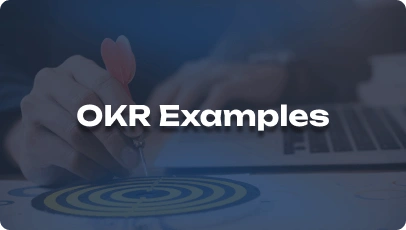Photojournalists play a crucial role in the Media/Journalism industry by capturing powerful images that tell stories, evoke emotions, and document events. Mastering the art of photojournalism can enhance storytelling, engage audiences, and provide a visual narrative that complements written content. In today’s digital age, photojournalists face challenges such as adapting to new technologies, meeting tight deadlines, and maintaining ethical standards in image production.
1. How do you approach capturing images that convey a strong narrative in photojournalism?
Answer: I focus on finding compelling moments, framing shots thoughtfully, and paying attention to details that enhance the story.
2. Can you discuss a recent project where you integrated multimedia elements into your photojournalism work?
Answer: I collaborated with video producers to create a multimedia package that combined photos, videos, and text to provide a comprehensive storytelling experience.
3. How do you stay updated on current trends and technologies in the photojournalism field?
Answer: I regularly attend workshops, follow industry blogs, and experiment with new tools to keep my skills sharp and stay ahead of trends.
4. Describe a challenging situation you faced during a photojournalism assignment and how you overcame it.
Answer: I encountered adverse weather conditions during a live event but managed to adapt by finding creative angles and using weather-resistant equipment to capture the essence of the story.
5. How do you ensure that your photojournalism work aligns with ethical standards and maintains integrity?
Answer: I adhere to journalistic principles, seek consent when necessary, provide context to images, and avoid altering photos in a way that distorts reality.
6. In what ways do you collaborate with journalists and editors to enhance storytelling through visuals?
Answer: I communicate closely with writers to understand the narrative, pitch visual ideas, and ensure that my photos complement the written content effectively.
7. How do you handle sensitive or emotional subjects when capturing images as a photojournalist?
Answer: I approach such subjects with empathy, respect, and sensitivity, always prioritizing the dignity and privacy of the individuals involved.
8. Can you discuss a time when you had to work under tight deadlines in the field of photojournalism?
Answer: I once covered a breaking news story where I had to deliver images within hours. I managed my time efficiently, edited on the go, and communicated with the editorial team to meet the deadline.
9. What role do social media platforms play in the distribution of photojournalism work, and how do you leverage them?
Answer: Social media is crucial for sharing visual stories quickly and reaching a broader audience. I use platforms like Instagram and Twitter to showcase my work, engage with followers, and stay connected with industry trends.
10. How do you handle copyright issues and permissions when using photographs in your photojournalism work?
Answer: I ensure that I have the necessary rights or permissions for the images I use, credit other photographers when needed, and respect intellectual property laws to protect my work and others’ rights.
11. What strategies do you employ to capture authentic moments and emotions in your photojournalism work?
Answer: I build rapport with subjects, observe interactions discreetly, and aim to capture candid moments that reflect genuine emotions and experiences.
12. How do you approach visual storytelling differently for different platforms, such as print media, online publications, and social media?
Answer: I adapt my visual storytelling techniques based on the platform’s audience, format, and engagement preferences, tailoring the content to resonate effectively in each context.
13. Can you discuss the impact of photo editing software on modern photojournalism practices?
Answer: Editing software enhances the quality and aesthetics of images but should be used judiciously to maintain the authenticity and integrity of the visual narrative.
14. How do you handle constructive criticism and feedback on your photojournalism work?
Answer: I welcome feedback as an opportunity for growth, reflect on suggestions, and use them to refine my skills and approach in future projects.
15. What strategies do you use to build a strong portfolio as a photojournalist and showcase your unique style?
Answer: I curate a diverse portfolio that highlights my versatility, visual storytelling skills, and ability to capture moments that resonate with audiences, showcasing my signature style while demonstrating adaptability.
16. How do you approach research and preparation before embarking on a photojournalism assignment?
Answer: I conduct thorough research on the subject, location, and context of the assignment, create shot lists, and anticipate potential challenges to ensure a smooth and successful shoot.
17. Can you discuss the role of lighting in creating impactful photojournalism images and how you manipulate light to your advantage?
Answer: Lighting is crucial in setting the mood, highlighting subjects, and creating visual interest. I utilize natural light, artificial lighting, and techniques like backlighting and sidelighting to enhance my photos creatively.
18. How do you approach storytelling through a series of images or a photo essay in your photojournalism projects?
Answer: I sequence images to create a narrative arc, establish visual continuity, and convey a story with a beginning, middle, and end, ensuring that each photo complements the overarching message.
19. What steps do you take to protect your equipment and ensure its reliability during photojournalism assignments?
Answer: I maintain my gear regularly, carry backups for essential equipment, use protective cases, and stay prepared for unexpected situations to prevent technical failures that could compromise my work.
20. How do you approach diversity and inclusion in your photojournalism work, ensuring representation and authentic storytelling?
Answer: I strive to capture diverse perspectives, cultures, and voices in my images, actively seeking out underrepresented stories and communities to promote inclusivity and authenticity in visual storytelling.
21. Can you discuss a time when you had to navigate challenging ethical dilemmas while working on a photojournalism assignment?
Answer: I encountered a situation where I had to balance the public interest with the privacy of individuals involved. I consulted with colleagues, weighed the ethical implications, and made decisions that prioritized respect and integrity in my work.
22. How do you approach post-processing and editing of images in photojournalism while maintaining the authenticity of the visual narrative?
Answer: I use editing tools to enhance images subtly, correct technical imperfections, and ensure visual consistency, avoiding alterations that misrepresent the truth or manipulate the story.
23. What strategies do you use to engage with audiences and evoke emotions through your photojournalism work?
Answer: I craft images that resonate emotionally, tell compelling stories, and invite viewers to connect with the subjects or events depicted, sparking curiosity, empathy, and reflection.
24. How do you approach self-care and resilience in the demanding field of photojournalism to avoid burnout and maintain creativity?
Answer: I prioritize mental and physical well-being, establish boundaries, seek support from peers, and practice mindfulness to recharge, stay inspired, and sustain a healthy work-life balance in a high-pressure environment.
25. Can you discuss a time when you had to adapt quickly to unexpected changes or challenges during a photojournalism assignment?
Answer: I once faced a sudden change in shooting location due to unforeseen circumstances but managed to pivot seamlessly, adjust my approach creatively, and deliver impactful images despite the challenges.
26. How do you approach storytelling through composition and framing techniques in your photojournalism work?
Answer: I pay attention to visual elements such as leading lines, framing, symmetry, and perspective to create dynamic compositions that guide the viewer’s eye, convey emotions, and enhance the narrative impact of the images.
27. What strategies do you use to build relationships and establish trust with subjects when capturing images as a photojournalist?
Answer: I communicate openly, listen actively, show empathy, and respect boundaries to build rapport with subjects, gain their trust, and create a comfortable environment for authentic storytelling.
28. How do you approach self-promotion and networking as a photojournalist to expand your reach and opportunities in the industry?
Answer: I leverage social media, online portfolios, industry events, and collaborations to showcase my work, connect with potential clients, and build a strong professional network that opens doors to new projects and collaborations.
29. Can you discuss the importance of storytelling through captions and contextual information in photojournalism and how you craft effective narratives?
Answer: Captions provide essential context, background information, and emotional cues that complement images, enriching the storytelling experience for viewers. I craft concise, engaging captions that add depth and meaning to my photos.
30. How do you approach visual aesthetics and style consistency in your photojournalism work to create a cohesive body of work?
Answer: I develop a visual language, color palette, and editing style that reflect my artistic vision and brand identity, ensuring consistency across my portfolio while allowing room for creative experimentation and growth.






